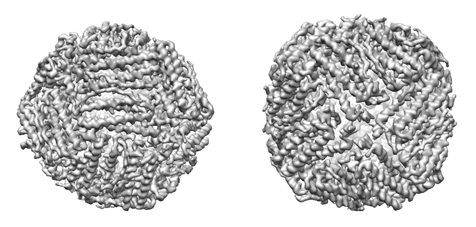In 2017, the Nobel Prize in Chemistry was awarded to three scientists “for developing cryo-electron microscopy for the high-resolution structure determination of biomolecules in solution”. Now, ASC18 has chosen cryo-electron microscopy (cryo-EM) as the latest challenge for 300 student teams in this year’s competition, with participants tasked with optimizing the computing capacity of RELION, a 3D reconstruction software.
As an important method in structural biology, cryo-EM allows the observation of the structure of bio macromolecules such as nucleic acids and proteins. In contrast to X-ray crystallography and magnetic resonance imaging, cryo-EM allows high-resolution 3D imaging without damaging the structures of the bio macromolecules, allowing for more in-depth exploration of macromolecular structures and providing greater insight into their functions.

Cryo-EM technology includes three main steps: First, specimens are rapidly frozen, so that the proteins and the aqueous solutions form a glassy state, preserving the protein structure. Next, high-resolution 2D projection images are acquired through cryo electron tomography. Finally, 3D density maps are drawn from the 2D image using 3D reconstruction software.
However, the success of cryo-EM faces numerous challenges. Cryo electron tomography and image processing algorithm have long hindered the development of cryo-EM. As macromolecular solution transits to a glassy state, cryo-EM technology requires thousands of high-quality images collected with high throughput. The image processing that follows, including the correction and evaluation of the micrographs, CTF estimates, particle selection and sorting, 2D and 3D classification, orientation refinement and reconstruction, and post-processing, requires coordinating advanced computing resources and efficient algorithms. Since the development of cryo-EM nearly 30 years ago, developing fast and efficient algorithms to process images has remained a significant challenge.
The ASC18 challenge provides participating teams with a cryo-EM data set of apo-ferritin, requiring teams to perform 2D and 3D classification and 3D model reconstruction of the sequenced particle images with the most advanced supercomputing technology and RELION, the most commonly used software in cryo-EM. Teams will need to maintain a resolution of 3.3 Å while reducing computing time as much as possible. As part of the competition, teams must submit an introduction the supercomputing environment including hardware platforms, OS, TPL, and databases, as well as the methods of evaluation and optimization. They also need to submit RELION output files, including images of 2D classification, 3D classification, and 3D reconstruction.

About ASC
Initiated by China, the ASC Student Supercomputer Challenge is the world’s biggest student supercomputer competition. Since the first ASC challenge was launched in 2012, the competition has continued to grow in influence, with more than 1,100 teams and 5,500 young talents from around the world having participated.



























































